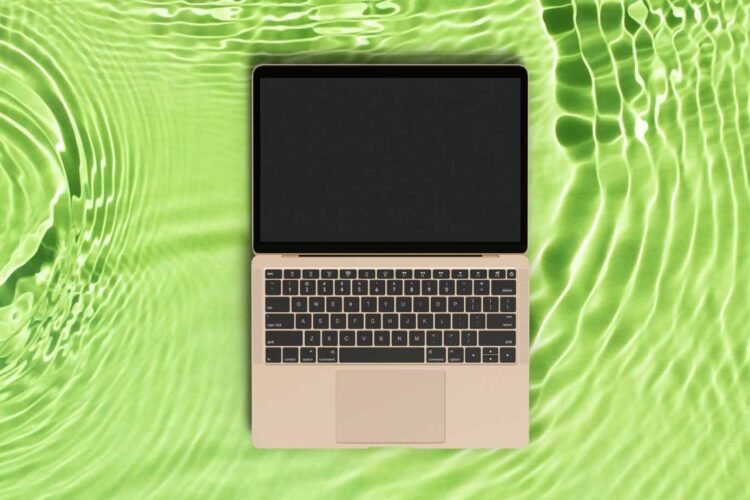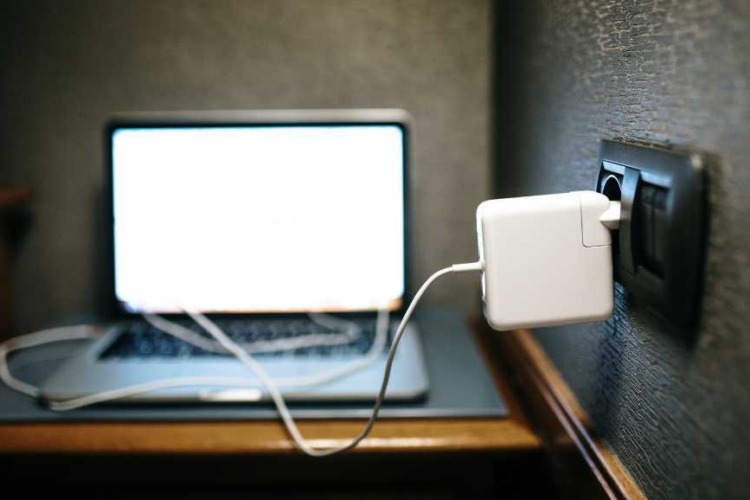

How To Fix Macbook Hang: Ultimate Macbook Repair Singapore
MacBook hang or freezing is a problem that many users encounter, albeit rarely. But when it does happen, it can be incredibly frustrating and potentially disastrous if you haven’t saved your work.
So, why should you care about this issue? First, a hanging MacBook disrupts your workflow. Second, it could be a sign of underlying issues that need immediate attention. Ignoring the problem could lead to more severe complications down the line. Therefore, addressing it promptly is crucial.
Now, you might be wondering what this blog post is all about. Well, we’ve got you covered. We’ll delve into the symptoms that indicate your MacBook is hanging, explore the reasons behind it, and most importantly, guide you through the steps to fix it. But that’s not all. We’ll also provide preventive measures to help you avoid facing this issue in the future.
What sets this guide apart? It’s not just a troubleshooting manual. It’s a comprehensive resource designed to give you a deep understanding of what causes MacBook hangs and how to prevent them. So, you’re not just fixing a problem; you’re equipping yourself with the knowledge to ensure it doesn’t happen again.
By the end of this guide, you’ll be well-versed in tackling this issue, armed with actionable steps and preventive tips. So, let’s dive in and get that MacBook running smoothly again.
1. The Symptoms of Macbook Hang
Recognizing the symptoms of a hanging MacBook is the first step in troubleshooting the issue.
So, what are the telltale signs? First off, you might notice that your cursor has become unresponsive. Alternatively, your keyboard might not register any keystrokes. In some cases, you’ll see the infamous spinning beach ball, also known as the “spinning pizza of death” or SPOD. This usually indicates that your system or a specific app is stuck in a loop.
Now, let’s differentiate between app-specific hangs and system-wide hangs.
If you can still use your mouse and keyboard but notice that a particular app isn’t responding, you’re likely dealing with an app-specific hang. Often, force-quitting the troublesome app can resolve the issue. On the other hand, if your entire macOS becomes unresponsive, you’re facing a system-wide hang. In such cases, rebooting your MacBook might be the only way out.
Interestingly, some users have reported that their MacBook freezes when they close the lid and open it later. This could be due to various factors, such as software glitches or incompatible applications. So, it’s crucial to keep an eye out for such peculiar behaviors as well.
Moreover, if you find that your MacBook is consistently freezing at startup or during specific tasks, it’s a sign that you need to dig deeper. Sometimes, the issue might even persist after rebooting, indicating a more severe problem that requires immediate attention.
In summary, understanding the symptoms of a hanging MacBook is crucial for effective troubleshooting. Whether it’s an app-specific hang or a system-wide issue, recognizing the signs will help you take the right course of action. Stay tuned as we delve into the reasons behind these hangs and how to fix them in the upcoming sections.
2. Why Does a MacBook Hang?
So, you’ve identified the symptoms of a hanging MacBook. The next logical question is, “Why does this happen?” Let’s dive into the various factors that could be causing your MacBook to hang or freeze.
Software Issues
Bugs and Glitches
Software isn’t perfect. Sometimes, bugs and glitches in the macOS or in specific apps can cause your system to hang. For instance, a poorly coded app might consume too much memory, causing other applications to freeze.
Incompatible Updates
Another software-related issue is incompatible updates. You might have recently updated macOS or an app, only to find that your MacBook starts hanging. This usually happens when the new version has conflicts with your current system settings or other installed software.
Hardware Issues
Overheating
Your MacBook is a machine, and machines get hot. Overheating can cause your system to slow down and eventually hang. Make sure your MacBook has proper ventilation to avoid this issue.
RAM Issues
Insufficient or faulty RAM can also cause your MacBook to hang. If you’re running multiple heavy applications simultaneously, your RAM might not be able to handle it, leading to a system-wide hang.
External Factors
Peripheral Devices
Sometimes, the issue isn’t with your MacBook but with the devices connected to it. Faulty USB devices or incompatible peripherals can cause your system to hang. So, consider unplugging them and checking if the issue persists.
Network Issues
Lastly, network issues can also cause your MacBook to hang, especially if you’re using network-intensive applications. A poor Wi-Fi connection or issues with your router can lead to system hangs.
In summary, a hanging MacBook can be the result of various factors, ranging from software bugs to hardware issues and even external factors like peripherals and network issues. Identifying the root cause is crucial for effective troubleshooting, which we’ll get into in the next sections.
3. Immediate Actions to Take
So, your MacBook has frozen, and you’re staring at a screen that’s not responding. What do you do now? Don’t panic; we’ve got some immediate actions you can take to get things back on track.
Force Quitting Apps
Firstly, if you suspect that a specific app is causing the hang, try force-quitting it. On your MacBook, you can do this by pressing Command + Option + Esc. This will bring up the “Force Quit Applications” menu. From there, select the unresponsive app and click “Force Quit.” According to Macworld, this is often the quickest way to resolve app-specific hangs.
Rebooting the System
However, if the entire system is unresponsive, you’ll need to reboot. To do this, click on the Apple menu at the top left of the screen and select “Restart.” If that’s not possible because your mouse is unresponsive, you can use the keyboard shortcut Control-Option-Command-Power button to force a restart. This action will close all apps and restart your MacBook, so make sure you’ve saved your work beforehand.
Using Keyboard Shortcuts
Keyboard shortcuts can be lifesavers in situations like this. For instance, if your mouse is unresponsive, you can use Command-Control-Eject to restart your system. These shortcuts offer a quick way to take action when the usual methods aren’t working.
So, why are these immediate actions important? Well, they can help you regain control of your MacBook and prevent potential data loss. Moreover, they can provide clues about what’s causing the hang, whether it’s an app or a system-wide issue.
In summary, when your MacBook hangs, you have several immediate actions at your disposal. Force quitting apps, rebooting the system, and utilizing keyboard shortcuts can help you get back to a functional state. In the following sections, we’ll delve deeper into more advanced troubleshooting steps to ensure this doesn’t happen again.
4.In-Depth Troubleshooting
Alright, you’ve tried the immediate actions, but your MacBook is still acting up. It’s time to roll up your sleeves and get into some in-depth troubleshooting. Let’s dive in!
Safe Mode: Booting in Safe Mode to Diagnose Issues
Firstly, booting your MacBook in Safe Mode can help you diagnose issues. To do this, restart your MacBook and hold down the Shift key until you see the login window. Safe Mode disables unnecessary startup items and checks your disk for issues. According to iMore, this is a useful step for identifying problems that might not appear in normal mode.
Activity Monitor: How to Use It to Identify Problematic Apps
Next, let’s talk about Activity Monitor. This tool shows you all the processes running on your MacBook. Open it by going to Applications > Utilities > Activity Monitor. Look for apps that are consuming too much CPU or memory. High usage could indicate a problematic app that needs to be closed or uninstalled.
Disk Utility: Checking and Repairing Disk Errors
Disk errors can also cause your MacBook to hang. Open Disk Utility by navigating to Applications > Utilities > Disk Utility. Select your startup disk and click on “First Aid.” This will check and repair any disk errors. MacBookProSlow suggests using this feature to fix potential disk errors that could be causing your system to freeze.
System Preferences: Tweaking Settings That Could Resolve Hanging Issues
Sometimes, tweaking a few settings can resolve issues. Go to Apple Menu > System Preferences and explore options like Energy Saver, Security & Privacy, and Accessibility. For instance, disabling “Put hard disks to sleep when possible” under Energy Saver could help.
Log Files: How to Read and Understand macOS Log Files for Advanced Troubleshooting
Lastly, for those who are more technically inclined, macOS log files can provide valuable insights. You can access these logs via the Console app (Applications > Utilities > Console). Look for recurring errors or warnings that coincide with the hangs. This is advanced troubleshooting and should be done carefully.
In summary, in-depth troubleshooting involves several steps. From booting in Safe Mode to checking disk errors and tweaking system settings, each step can help you identify and fix the root cause of your MacBook hanging. And don’t forget, log files can be a goldmine of information for those who know how to interpret them.
5. Hardware Checks: A Comprehensive Guide
Checking RAM
Firstly, let’s talk about RAM, or Random Access Memory. This is the workspace for your computer’s processor. If your Mac is running slow, checking the RAM is a good starting point. Apple provides a built-in tool called Apple Diagnostics for this purpose. To run it, restart your Mac and hold down the ‘D’ key until the Apple Diagnostics window appears. Follow the on-screen instructions. If an issue is found, you’ll receive a reference code that you can use for further troubleshooting.
Checking Storage
Next, let’s move on to storage. A full hard drive can also slow down your Mac. Apple Diagnostics can help here too, but it’s limited to internal hardware. For a more comprehensive check, go to ‘About This Mac’ under the Apple menu, then click on ‘Storage.’ This will show you a breakdown of your storage usage. If you’re running low, consider deleting unnecessary files or moving them to an external drive.
Inspecting for Overheating
Lastly, overheating can cause your Mac to hang or slow down. Unlike RAM and storage, Apple Diagnostics doesn’t cover this. However, you can manually check for signs. If your Mac is hot to the touch or you hear the fan running more than usual, it might be overheating. Make sure the vents are not blocked and consider using a cooling pad.

6. Preventive Measures
Now, let’s focus on preventive measures to ensure your MacBook stays in top shape.
Regular Updates
Firstly, keeping your MacBook updated is crucial. Apple regularly releases software updates to fix bugs and improve performance. To check for updates, go to Apple Menu > System Preferences > Software Update. If an update is available, click “Update Now.” According to How-To Geek, keeping your system updated can prevent many issues, including hangs.
Disk Cleanup and Optimization
Next, let’s talk about disk cleanup. Over time, your MacBook accumulates unnecessary files. These can slow down your system and even cause it to hang. Use built-in utilities like Disk Utility to check for errors and repair them. Additionally, consider using third-party apps to remove junk files and optimize your disk.
Using Trusted Software
Thirdly, always use trusted software. Download apps only from reputable sources like the App Store or trusted websites. Untrusted software can contain malware or bugs that can cause your MacBook to hang. So, be cautious about what you install.
Hardware Maintenance
Lastly, don’t forget about hardware maintenance. Regularly check your MacBook’s RAM and storage, as we discussed in the previous section. Also, ensure it’s not overheating by keeping the vents clear and considering the use of a cooling pad.
7. FAQs on Macbook Hang
How do you unfreeze a Mac?
To unfreeze a Mac, you can try force-quitting the unresponsive application by pressing Command + Option + Esc. This will bring up the “Force Quit Applications” menu, where you can select the problematic app and click “Force Quit.”
How do I fix the hanging problem on my MacBook?
Fixing a hanging problem on a MacBook involves several steps. Start with immediate actions like force-quitting apps and rebooting the system. If the issue persists, you may need to go into in-depth troubleshooting, which includes booting in Safe Mode, using Activity Monitor, and checking disk errors with Disk Utility.
What causes Mac to hang?
A Mac can hang due to various reasons, including software issues like bugs and incompatible updates, hardware issues like overheating and insufficient RAM, and external factors like faulty peripheral devices and network issues.
How do I restart my MacBook Pro when it hangs?
If your MacBook Pro hangs and the mouse is unresponsive, you can use the keyboard shortcut Control-Option-Command-Power button to force a restart. This will close all apps and restart your MacBook Pro.
How do you restart an unresponsive Mac?
To restart an unresponsive Mac, you can try the keyboard shortcut Command-Control-Eject if the mouse is not working. This will bring up the restart options. Alternatively, you can hold down the power button for a few seconds to force a shutdown and then press it again to restart.
How do I restart my frozen MacBook Pro without the power button?
If your MacBook Pro is frozen and the power button is not working, you can try using the keyboard shortcut Control-Option-Command-Eject to force a restart. If that doesn’t work, you may need to wait for the battery to drain completely, after which you can plug it in and restart.
Remember, these are general guidelines and may not work for all types of issues. For persistent problems, it’s advisable to consult an Apple Genius or a certified technician.
8. When to Seek Professional Help
So, you’ve tried all the troubleshooting steps and preventive measures, but your MacBook is still giving you a hard time. When should you seek professional help? Let’s explore.
Signs You Need Professional Help
Firstly, if you’ve tried all the troubleshooting steps and the issue persists, it’s time to consult an expert. According to Macworld, if your MacBook is still unresponsive after multiple reboots and Safe Boot attempts, professional help is advisable. Other signs include recurring error messages, system crashes, and hardware malfunctions like a flickering screen.
Risks of Not Seeking Professional Help
Secondly, not seeking professional help can exacerbate the problem. You risk losing important data or causing irreversible damage to your MacBook’s hardware. Moreover, you could end up wasting a lot of time and effort trying to fix something that requires specialized knowledge.
Suggest Volta PC Upgrade & Repair
Lastly, if you’re in need of reliable and professional service, consider Volta PC Upgrade & Repair. They offer a comprehensive range of Macbook repair services, from software troubleshooting to hardware repairs. Their certified technicians can diagnose and fix your MacBook issues efficiently, saving you time and stress.
Address:
Tai Seng Branch: 8 Burn Road #01-04, Trivex, Singapore 369977
Jurong Branch: Blk 132 #01-279C, Jurong Gateway Road, Singapore 6001324
- Contact:
Whatsapp us | Call 69500453 | Telegram us


Don’t Let Your MacBook Charger Overheat: Causes, Prevention, and Solutions

How to Fix Command + S not working on my MacBook Pro: Ultimate Macbook Repair Singapore
|
*CLOSED ON 31 Mar 2025 (Monday) Hari Raya |
